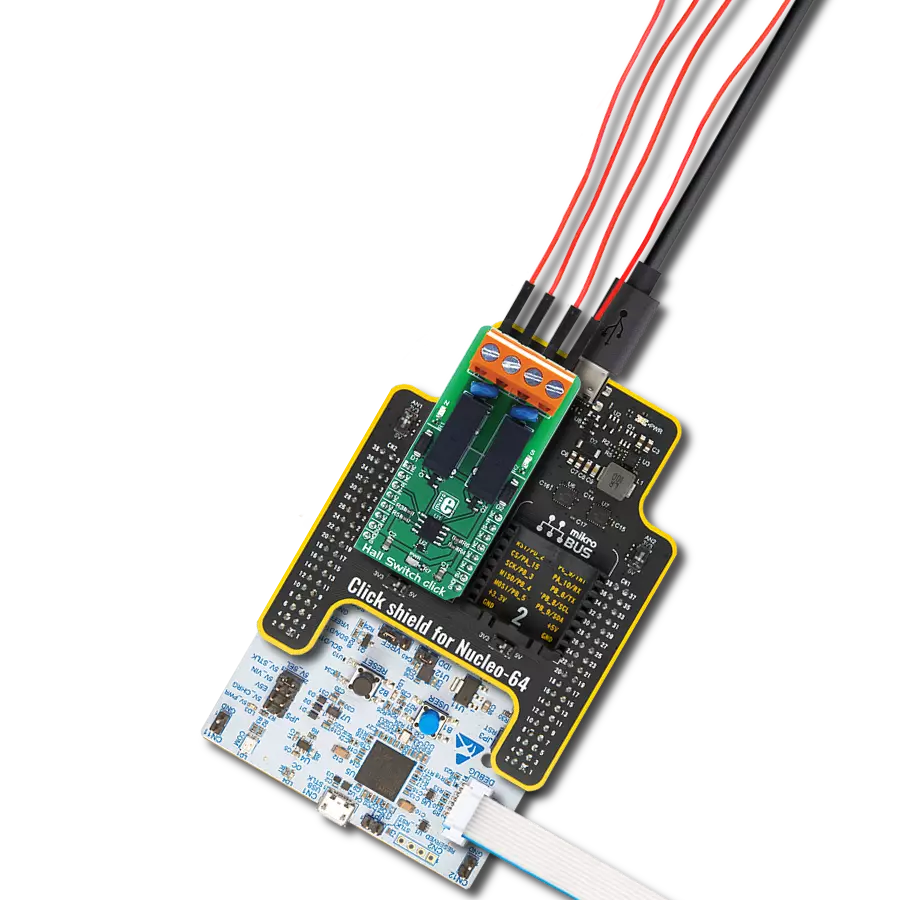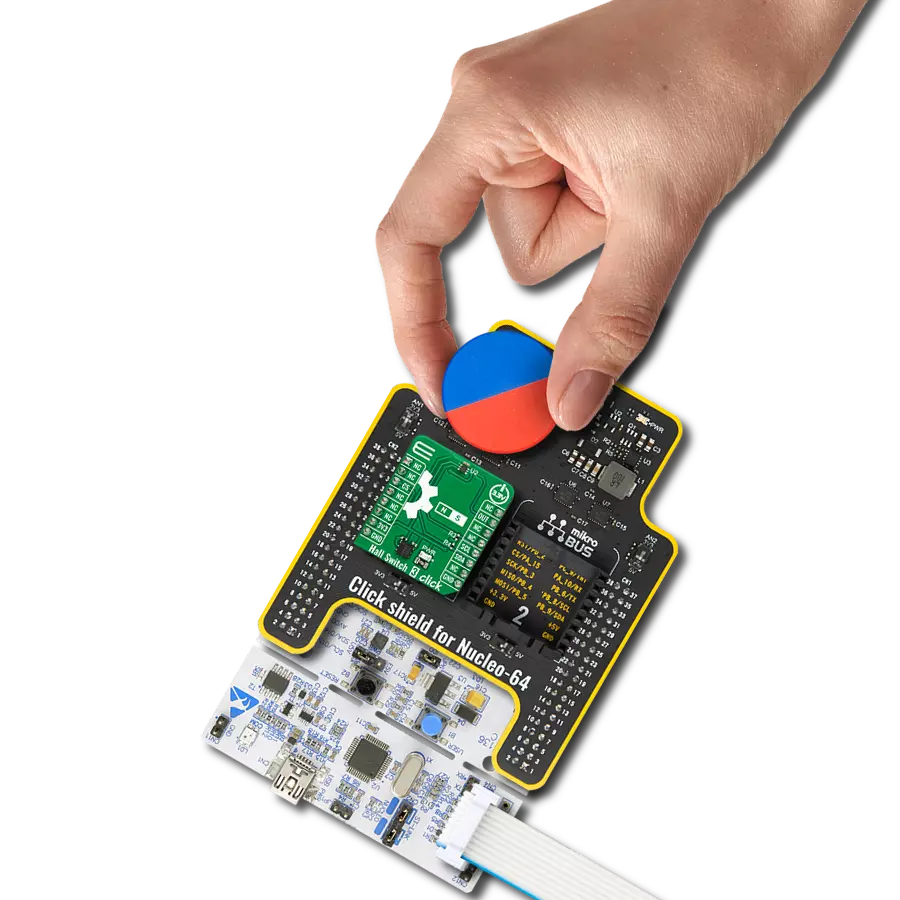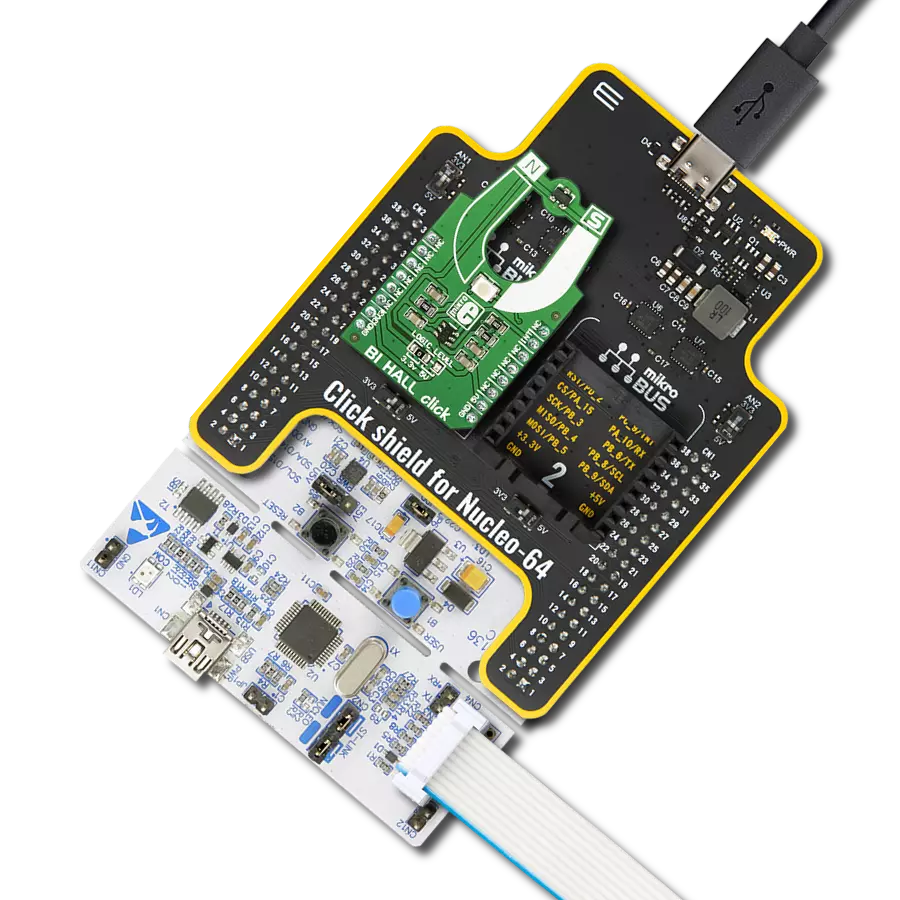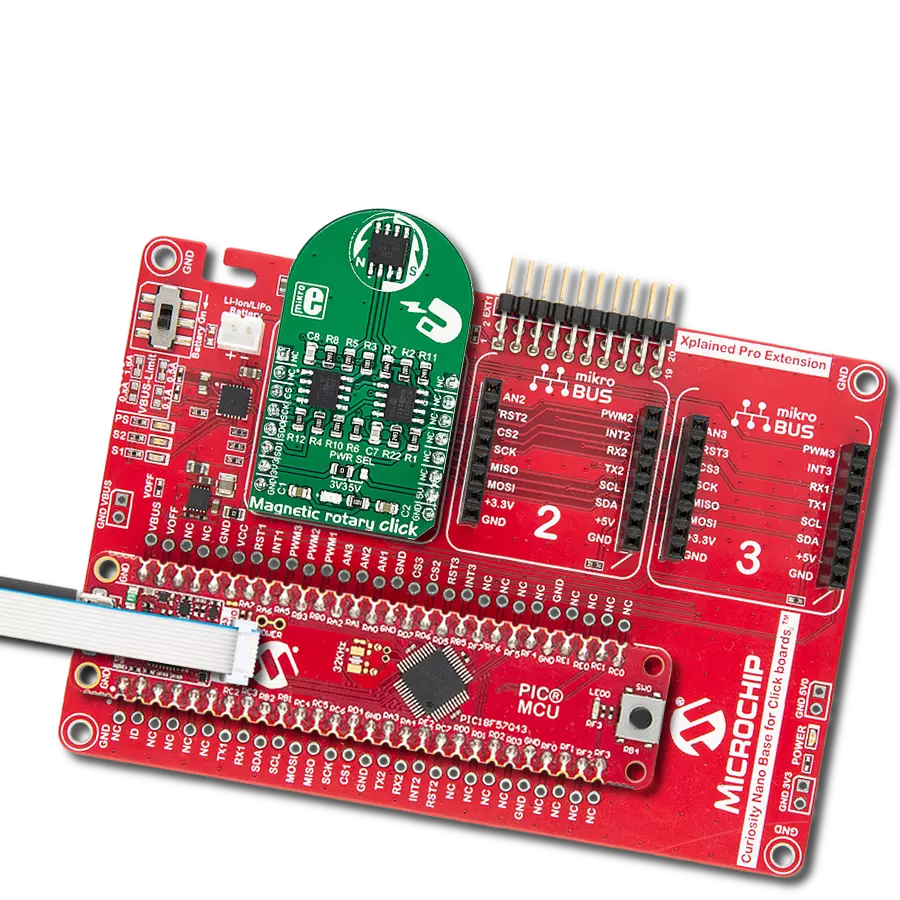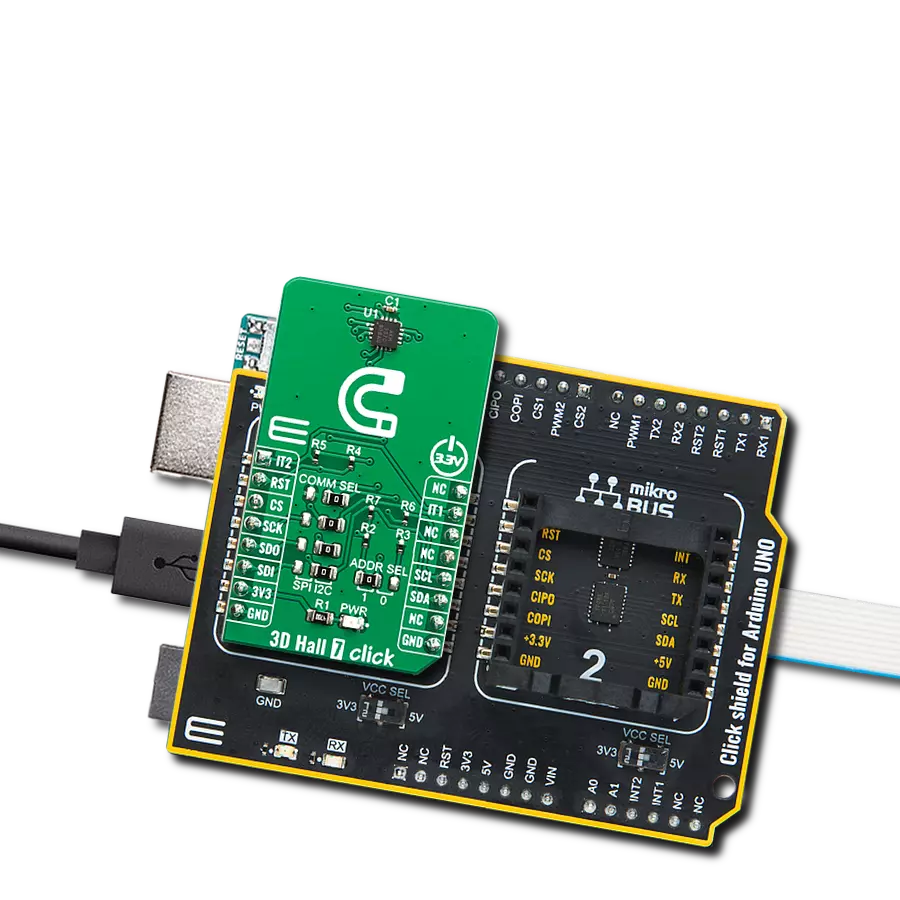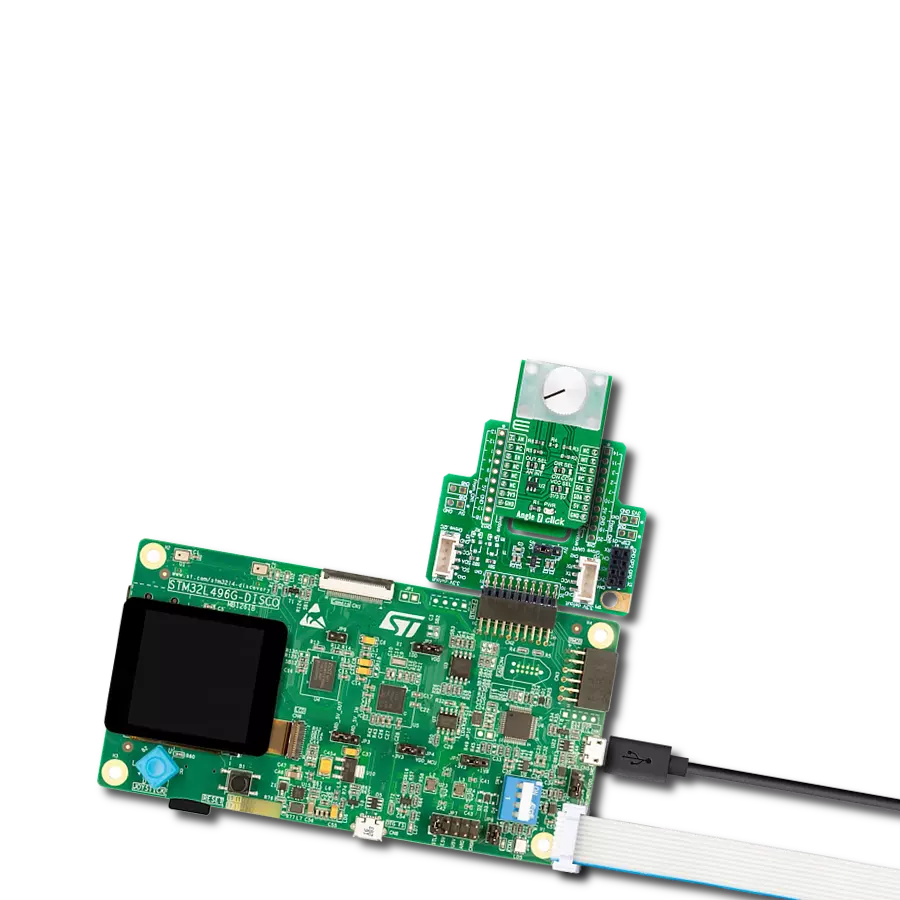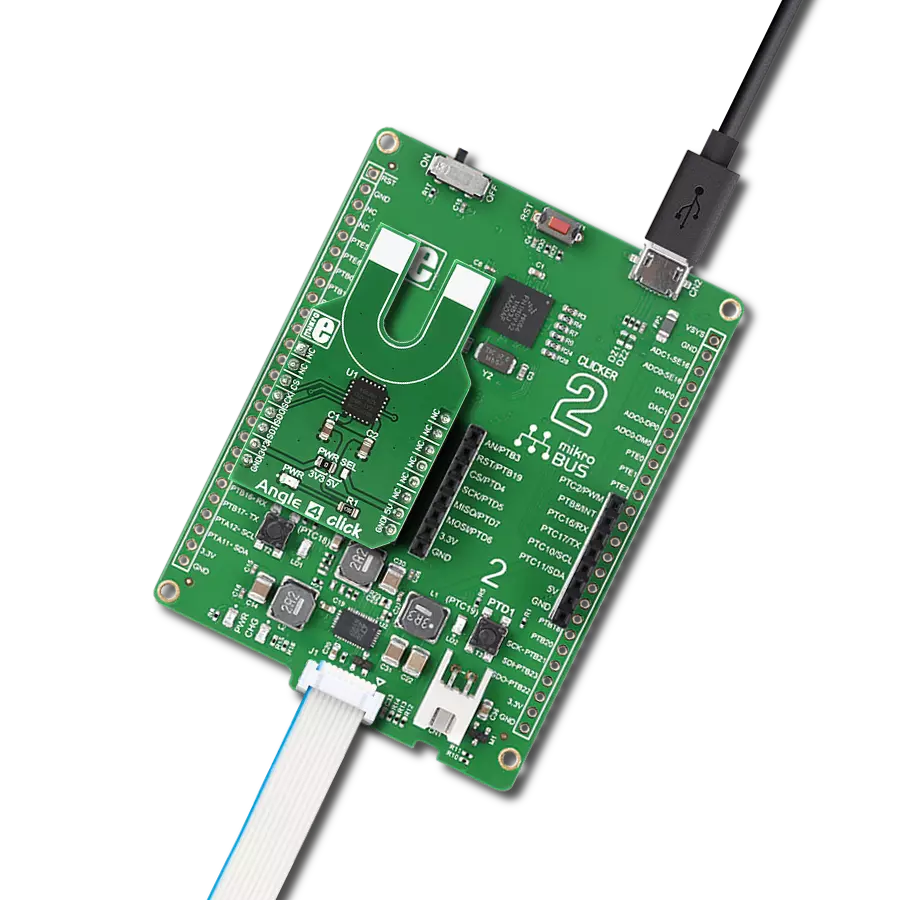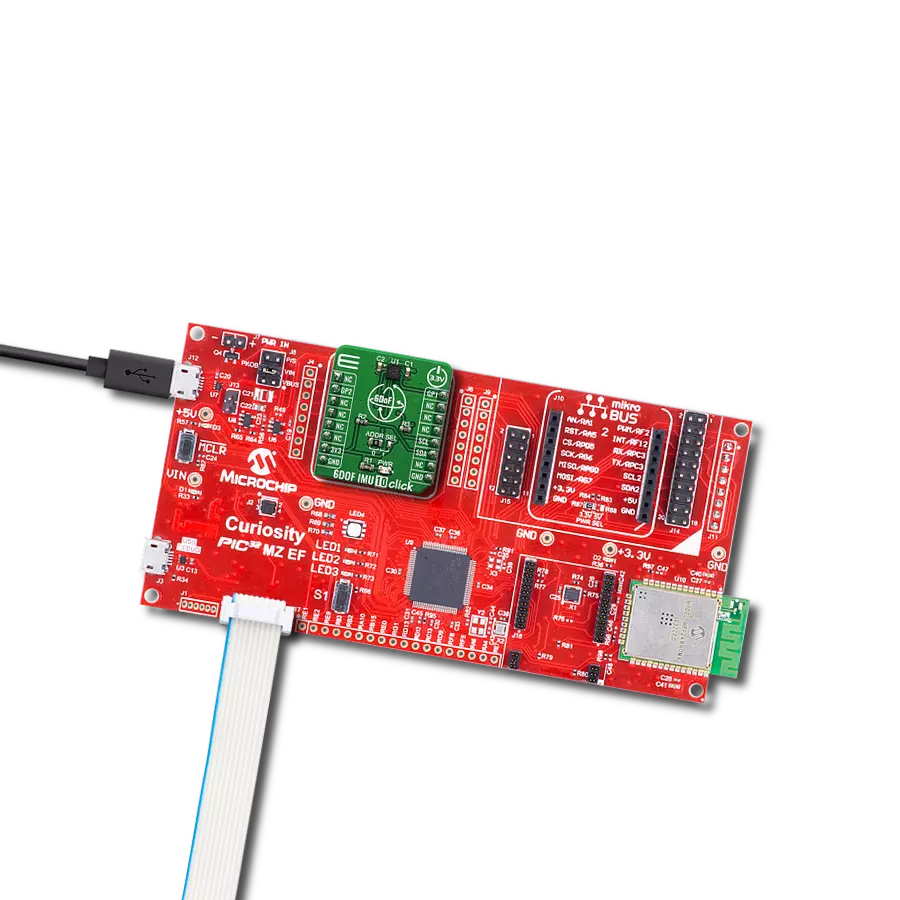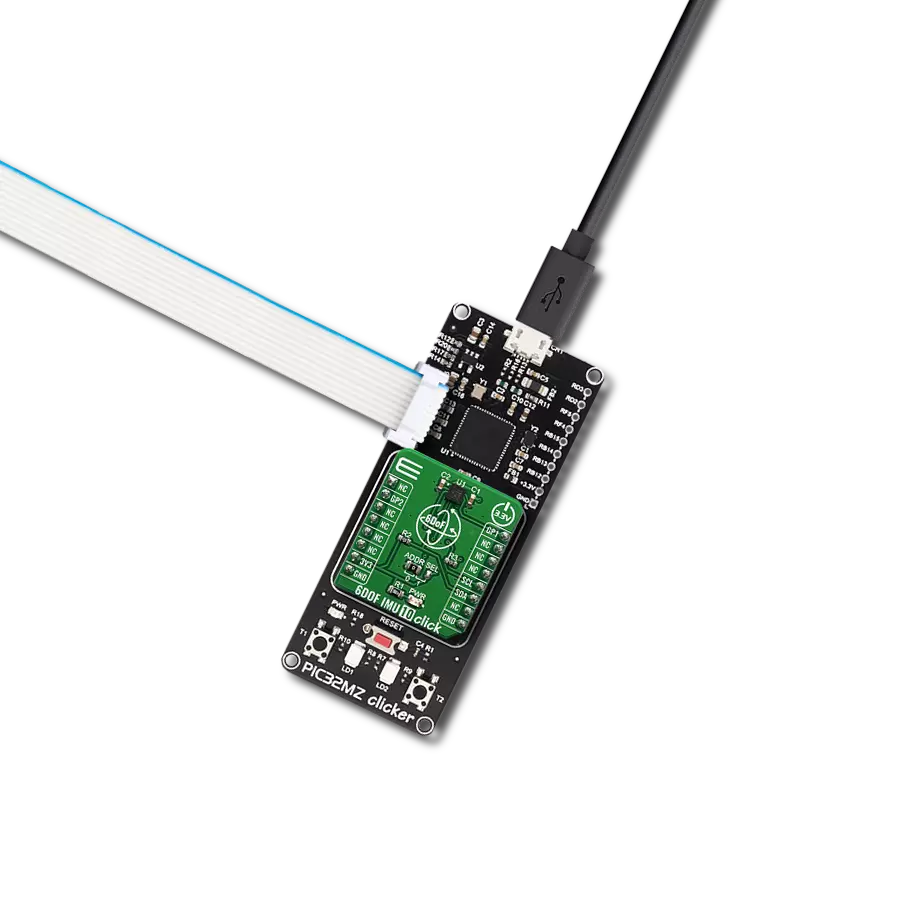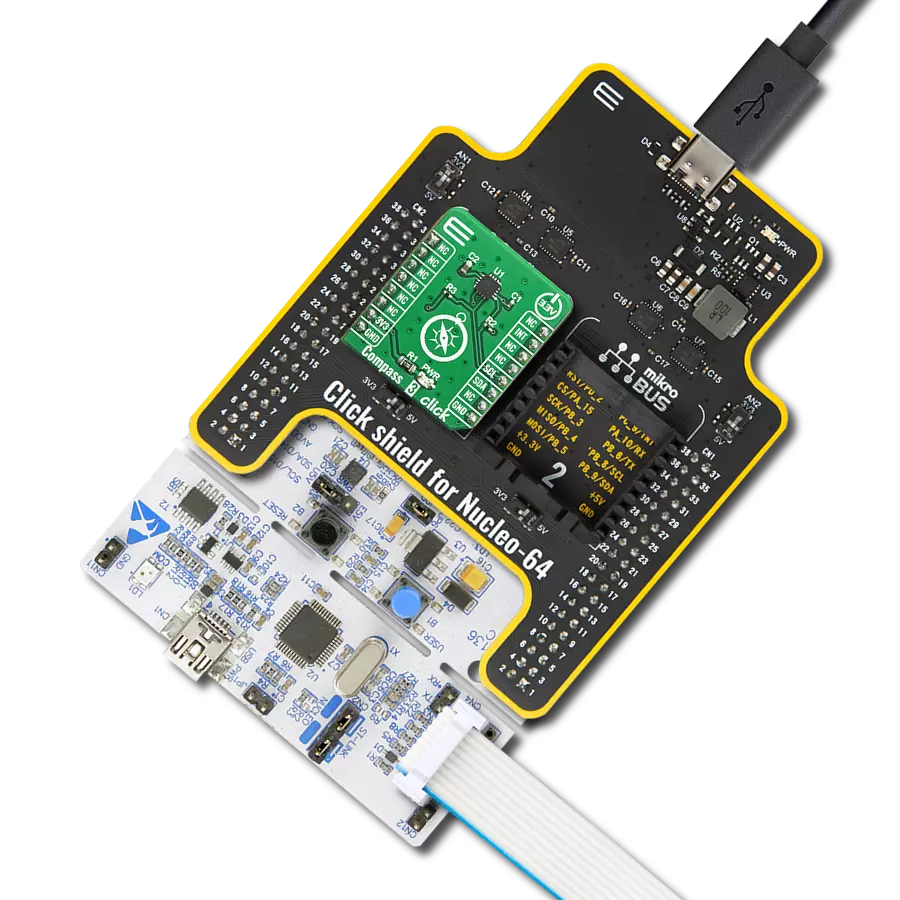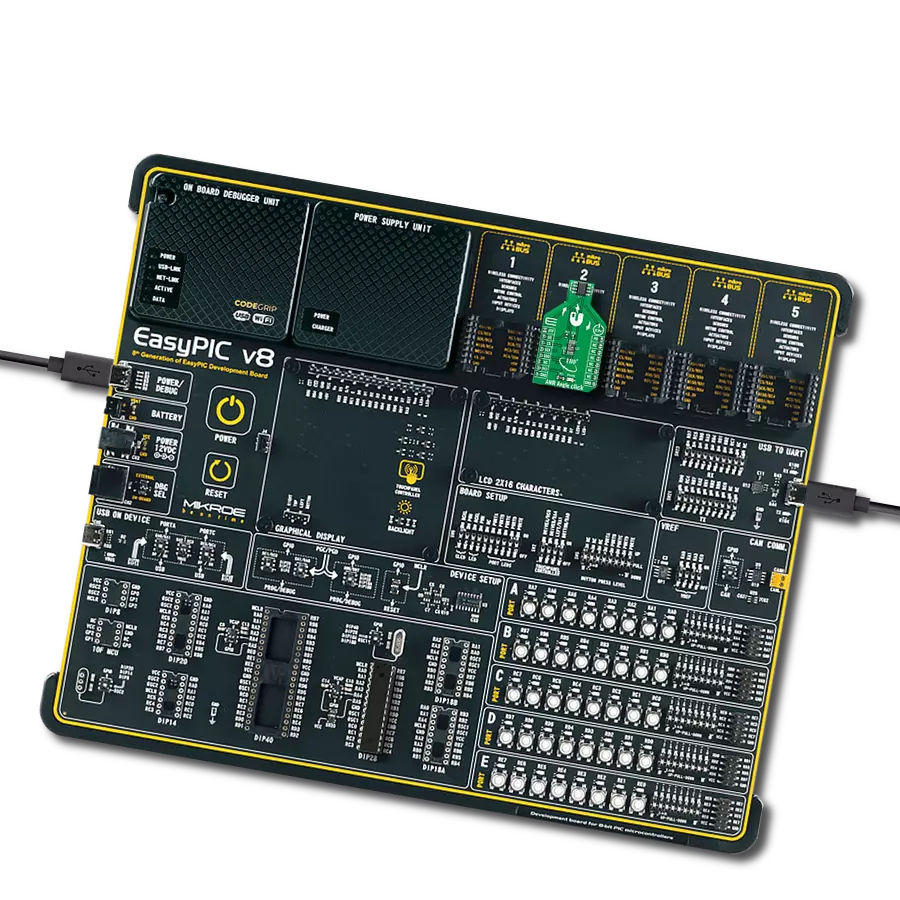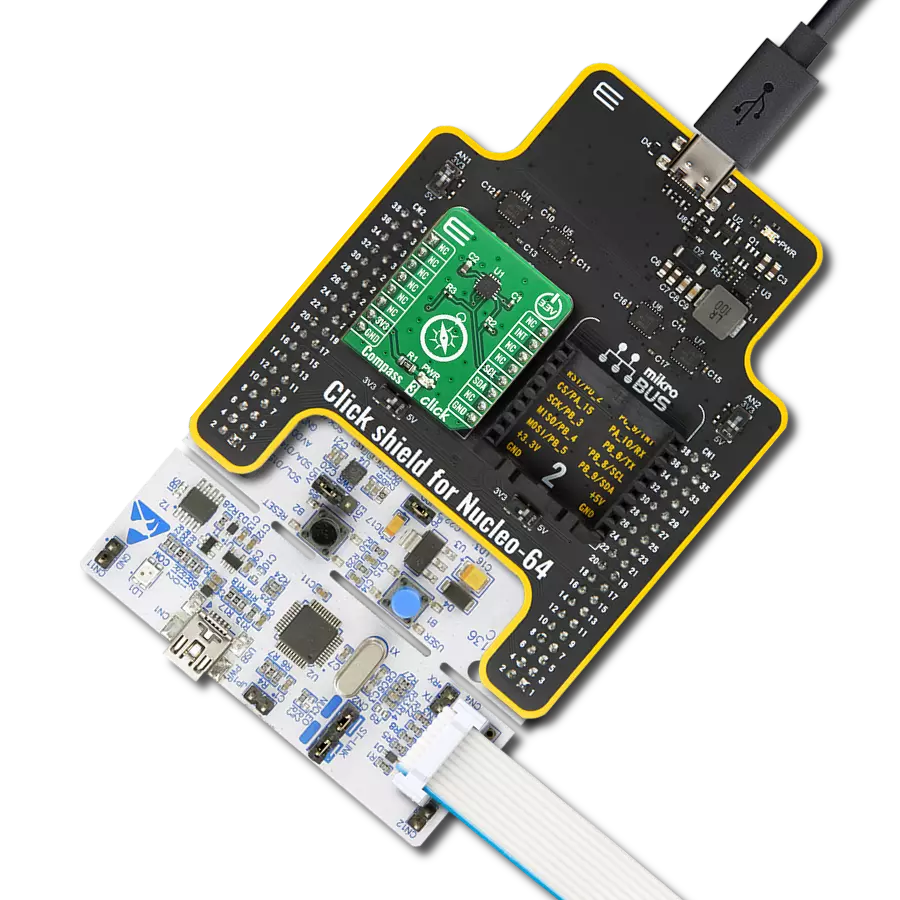Unlock the full potential of 3D magnetic sensing with our cutting-edge technology, revolutionizing industries and enhancing everyday lifestyles
A
A
Hardware Overview
How does it work?
3D Hall 8 Click is based on the TLI493D-W2BW, a low-power 3D Hall sensor with an I2C interface and a Wake-Up feature from Infineon. It consists of three central functional units containing the power mode control system, a low-power oscillator, basic biasing, undervoltage detection, and a fast oscillator. Besides, it has also implemented the sensing unit, which contains the HALL biasing, HALL probes with multiplexers and successive tracking ADC, and a temperature sensor. This sensor offers several use cases, including innovative human-machine interfaces in the form of industrial and consumer joysticks and precise position control in robotics. The power mode control provides the power distribution, which manages the Start-Up behavior in the TLI493D-W2BW, a power-on reset function, and a specialized low-power oscillator, the clock source.
The sensing unit measures the magnetic field in the X, Y, and Z directions. Each X-, Y-, and Z-Hall probe is connected sequentially to a multiplexer, connected to an analog-to-digital converter. Optional, the temperature measurement feature, activated in the default state, can be determined after the three Hall channels. 3D Hall 8 Click communicates with MCU using the standard I2C 2-Wire interface to read data and configure settings, supporting Fast Mode operation with a clock frequency up to 1MHz. The Wake-Up function has an upper and lower comparison threshold for each of the three magnetic channels (X/Y/Z). Each component of the applied field is compared to the lower and upper thresholds. If one of the results is above or below these thresholds, an interrupt is generated called a Wake-Up function. The Wake-Up mode allows the
sensor to continue making magnetic field measurements while the MCU is in the power-down state, which means the microcontroller will only consume power and access the sensor if relevant measurement data is available. An interrupt pin signals a finished measurement cycle but can also be used for I2C clock stretching. In this case, the INT pin must be connected to the SCL pin, which can be done by populating the jumper labeled JP1. This Click board™ can be operated only with a 3.3V logic voltage level. The board must perform appropriate logic voltage level conversion before using MCUs with different logic levels. Also, it comes equipped with a library containing functions and an example code that can be used as a reference for further development.
Features overview
Development board
Nucleo-64 with STM32G071RB MCU offers a cost-effective and adaptable platform for developers to explore new ideas and prototype their designs. This board harnesses the versatility of the STM32 microcontroller, enabling users to select the optimal balance of performance and power consumption for their projects. It accommodates the STM32 microcontroller in the LQFP64 package and includes essential components such as a user LED, which doubles as an ARDUINO® signal, alongside user and reset push-buttons, and a 32.768kHz crystal oscillator for precise timing operations. Designed with expansion and flexibility in mind, the Nucleo-64 board features an ARDUINO® Uno V3 expansion connector and ST morpho extension pin
headers, granting complete access to the STM32's I/Os for comprehensive project integration. Power supply options are adaptable, supporting ST-LINK USB VBUS or external power sources, ensuring adaptability in various development environments. The board also has an on-board ST-LINK debugger/programmer with USB re-enumeration capability, simplifying the programming and debugging process. Moreover, the board is designed to simplify advanced development with its external SMPS for efficient Vcore logic supply, support for USB Device full speed or USB SNK/UFP full speed, and built-in cryptographic features, enhancing both the power efficiency and security of projects. Additional connectivity is
provided through dedicated connectors for external SMPS experimentation, a USB connector for the ST-LINK, and a MIPI® debug connector, expanding the possibilities for hardware interfacing and experimentation. Developers will find extensive support through comprehensive free software libraries and examples, courtesy of the STM32Cube MCU Package. This, combined with compatibility with a wide array of Integrated Development Environments (IDEs), including IAR Embedded Workbench®, MDK-ARM, and STM32CubeIDE, ensures a smooth and efficient development experience, allowing users to fully leverage the capabilities of the Nucleo-64 board in their projects.
Microcontroller Overview
MCU Card / MCU
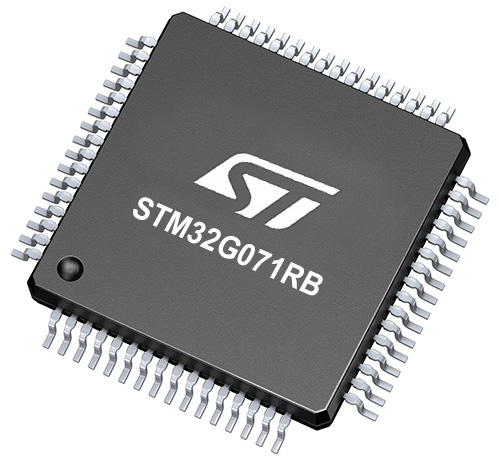
Architecture
ARM Cortex-M0
MCU Memory (KB)
128
Silicon Vendor
STMicroelectronics
Pin count
64
RAM (Bytes)
36864
You complete me!
Accessories
Click Shield for Nucleo-64 comes equipped with two proprietary mikroBUS™ sockets, allowing all the Click board™ devices to be interfaced with the STM32 Nucleo-64 board with no effort. This way, Mikroe allows its users to add any functionality from our ever-growing range of Click boards™, such as WiFi, GSM, GPS, Bluetooth, ZigBee, environmental sensors, LEDs, speech recognition, motor control, movement sensors, and many more. More than 1537 Click boards™, which can be stacked and integrated, are at your disposal. The STM32 Nucleo-64 boards are based on the microcontrollers in 64-pin packages, a 32-bit MCU with an ARM Cortex M4 processor operating at 84MHz, 512Kb Flash, and 96KB SRAM, divided into two regions where the top section represents the ST-Link/V2 debugger and programmer while the bottom section of the board is an actual development board. These boards are controlled and powered conveniently through a USB connection to program and efficiently debug the Nucleo-64 board out of the box, with an additional USB cable connected to the USB mini port on the board. Most of the STM32 microcontroller pins are brought to the IO pins on the left and right edge of the board, which are then connected to two existing mikroBUS™ sockets. This Click Shield also has several switches that perform functions such as selecting the logic levels of analog signals on mikroBUS™ sockets and selecting logic voltage levels of the mikroBUS™ sockets themselves. Besides, the user is offered the possibility of using any Click board™ with the help of existing bidirectional level-shifting voltage translators, regardless of whether the Click board™ operates at a 3.3V or 5V logic voltage level. Once you connect the STM32 Nucleo-64 board with our Click Shield for Nucleo-64, you can access hundreds of Click boards™, working with 3.3V or 5V logic voltage levels.
Used MCU Pins
mikroBUS™ mapper
Take a closer look
Click board™ Schematic

Step by step
Project assembly
Software Support
Library Description
This library contains API for 3D Hall 8 Click driver.
Key functions:
c3dhall8_generic_write- 3D Hall 8 I2C writing functionc3dhall8_read_sensor_data- Reading sensor data functionc3dhall8_get_xyz_magnetic_matching- Calculating magnetic matching
Open Source
Code example
The complete application code and a ready-to-use project are available through the NECTO Studio Package Manager for direct installation in the NECTO Studio. The application code can also be found on the MIKROE GitHub account.
/*!
* @file main.c
* @brief 3DHall8 Click example
*
* # Description
* This application shows capability of 3D Hall 8 Click board.
* It configures device and reads sensor data. Sensor is capeable
* of reading magnetic flux density from 3 axes and temperature.
*
* The demo application is composed of two sections :
*
* ## Application Init
* Initialization of device communication and application log
* and configures device.
*
* ## Application Task
* Reads data from the device and logs it in span of 500ms.
*
* @author Luka Filipovic
*
*/
#include "board.h"
#include "log.h"
#include "c3dhall8.h"
static c3dhall8_t c3dhall8;
static log_t logger;
void application_init ( void )
{
log_cfg_t log_cfg; /**< Logger config object. */
c3dhall8_cfg_t c3dhall8_cfg; /**< Click config object. */
uint8_t rx_data;
/**
* Logger initialization.
* Default baud rate: 115200
* Default log level: LOG_LEVEL_DEBUG
* @note If USB_UART_RX and USB_UART_TX
* are defined as HAL_PIN_NC, you will
* need to define them manually for log to work.
* See @b LOG_MAP_USB_UART macro definition for detailed explanation.
*/
LOG_MAP_USB_UART( log_cfg );
log_init( &logger, &log_cfg );
log_info( &logger, " Application Init " );
// Click initialization.
c3dhall8_cfg_setup( &c3dhall8_cfg );
C3DHALL8_MAP_MIKROBUS( c3dhall8_cfg, MIKROBUS_1 );
err_t init_flag = c3dhall8_init( &c3dhall8, &c3dhall8_cfg );
if ( init_flag == I2C_MASTER_ERROR )
{
log_error( &logger, " Application Init Error. " );
log_info( &logger, " Please, run program again... " );
for ( ; ; );
}
log_printf( &logger," > Setting configuration...\r\n" );
c3dhall8_default_cfg ( &c3dhall8 );
log_info( &logger, " Application Task " );
log_printf( &logger, "**************************************\r\n" );
Delay_ms ( 1000 );
}
void application_task ( void )
{
c3dhall8_data_t sens_data;
c3dhall8_read_sensor_data( &c3dhall8, &sens_data );
log_printf( &logger, "> X[mT]: %.2f\r\n> Y[mT]: %.2f\r\n> Z[mT]: %.2f \r\n> Temperature[C]: %.2f\r\n",
sens_data.x_axis, sens_data.y_axis, sens_data.z_axis, sens_data.temperature );
float magnetic_match = c3dhall8_get_xyz_magnetic_matching( &c3dhall8, sens_data );
log_printf( &logger, "> XYZ magnetic matching: %.2f\r\n", magnetic_match );
log_printf( &logger, "**************************************\r\n" );
Delay_ms ( 500 );
}
int main ( void )
{
/* Do not remove this line or clock might not be set correctly. */
#ifdef PREINIT_SUPPORTED
preinit();
#endif
application_init( );
for ( ; ; )
{
application_task( );
}
return 0;
}
// ------------------------------------------------------------------------ END
Additional Support
Resources
Category:Magnetic



















